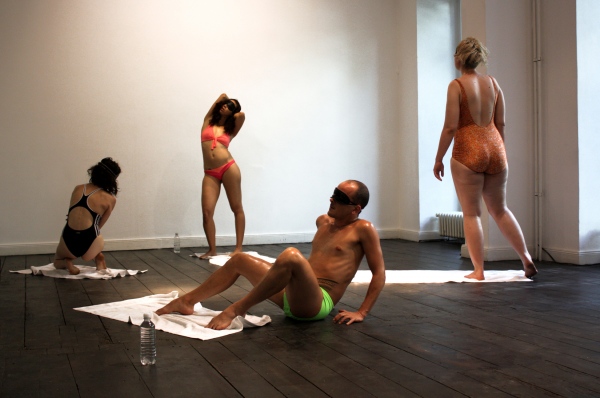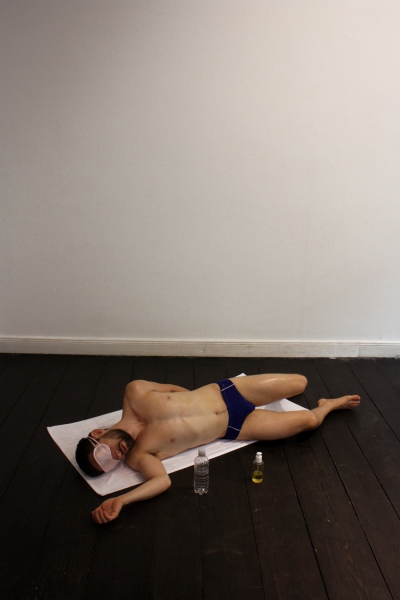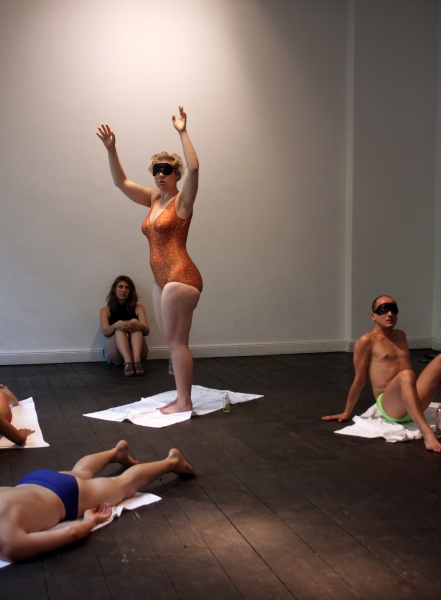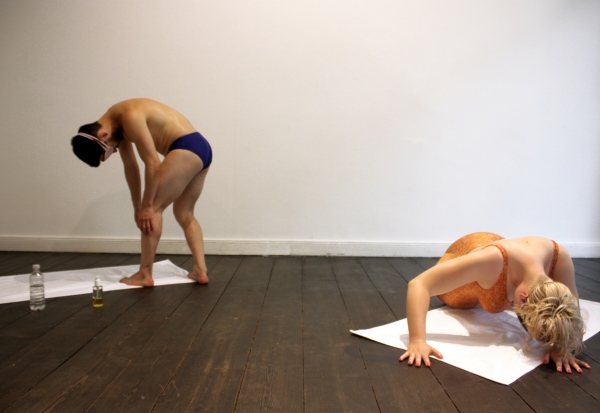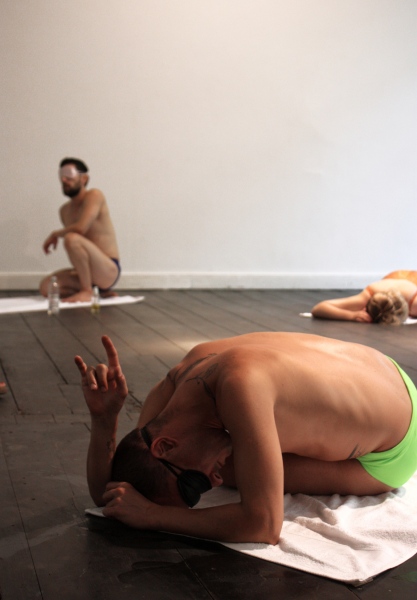sleeper from Julian Weber on Vimeo.
sleeper
performance of 4h in the frame of FEELINGS OF MY THATCHED HUT
curated by Amelie Wedel, Grimmuseum 2016
Concept: Julian Weber
Performance: Jorge De Hoyos, Lulu Obermayer, Lyllie Rouviere, Ivo Serra, Tatiana Mejia
How to Control Your Dreams
Part 1
Recording your dreams
1. Get a notebook. This will be your dream journal. In your dream journal, you'll write down what you hope to dream and what you remember dreaming.
Set the journal close to your bed and keep a pen nearby so that you can quickly write down what happened in the dreams you remember when you wake up. If you leave it any longer, the memory quickly fades.
It's recommended to write it in freehand. You'll spend more time putting pen to paper, making a larger connection in your brain between the dream and your recording of it.
2. Write down what you want to dream about in your notebook. Call this your target dream. Do this every night before you go to sleep. You are imagining the environment you want to experience when you fall asleep.
Draw pictures and write down directions, using lots of detail. In fact, put in as much detail as possible; get to the point where you think you may have too much detail. Even the smallest things are important. The trick is to tell yourself what you are going to experience when you dream, so that you can become aware of your dreaming state while you dream.
Don't watch television or movies before you go to bed, or you may dream about what they involved instead of your target dream.
3. Every morning, as soon as you wake up, write down your dream. Even if you didn't have the dream you anticipated having, write it down. Like an athlete practicing a routine, you are training your mind to recall its dreams. The more consistently you train your mind to recall its dreams, the sharper and more heightened your dreams will become.
Write down any parallels you remember between your target dream (the dream you wanted to have) and the dream you actually had. Be as specific as possible. Think about the similarities and differences.
Part 2
Practicing wakefulness
1. Read through your target dream. Every night, right before going to bed, go through it as many times as possible to set it fast in your head. After reading something one or two times, your brain thinks it knows what the words mean and gets lazy: it only processes the outline of the words and not their sense. Be sure to fully grasp the sense of your target dream so that you feel you know it inside and out before you go to sleep.
2. Walk through your target dream. Do this in the first-person point of view, from start to finish. Imagine what it would seem like through your eyes.
Try to walk through the target dream in the exact sequence you expect it in your dream.Think hard, but maintain a calm posture. Do not get tense. Just relax. Go to sleep with these images and sounds in your head. Remember to record your dreams, whatever they are, when you wake up.
Part 3
Getting control in dreams
1. Try "reality checks" throughout the day. A reality check is when you ask yourself: "Am I awake, or am I dreaming?" This will ultimately help you tell the difference between the dream world and reality when you are asleep.
Reality checks call attention to a fundamental difference between dreams and reality: in dreams, states are fluid; in reality, states stay the same. In dreams, text will change into different words; trees change color and shape; clocks tell time backwards instead of forwards. In reality, text stays the same, trees stay rooted in the ground, and clocks move clockwise.
A good reality check to perform, both in reality and dreams, is looking at text. Suppose a poster in your room says "Justin Bieber." Turn away for a minute, and look at the poster again. If it still says "Justin Bieber," the reality check says that you're awake. If you turn away, then look at the poster and it says "Selena Gomez," the reality check will tell you that you're dreaming.
2. Do your reality check very good. When you're having a dream and realize that you are having a dream, then you start to be able to control most of what happens in your dream.
When you make the step and realize you're dreaming, try to calm yourself down. If you get too excited about finally being able to control your dreams, you might accidentally wake up from excitement.
julywebercontact@gmail.com

